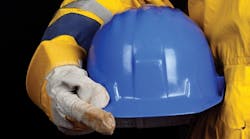Exploring the Limits of OSHA's Inspection Authority: A Precursor to Exercising Your Rights
If an OSHA inspector, known as a compliance safety and health officer (CSHO), arrives at your door, presents his or her credentials, and asks for you to consent to an inspection of your workplace, what do you do? If you consent, what should you expect to happen next? And if you refuse to consent, then what? Obviously it would be wishful thinking to conclude that the CSHO would simply leave, bid you good day and never come back.
These rather elementary questions are among the many questions you will need to answer before, during and after an OSHA inspection. In order to answer these questions in the face of an OSHA inspection in an informed, prudent manner, it is critical to have an understanding of the limits of OSHA’s inspection authority and a clear understanding of the process.
In other words, what is OSHA permitted to do and, also, what are your rights? This article answers many of the questions that are likely to come to mind should you be so unlucky to get the proverbial “knock on the door” by OSHA and aims to provide you with the knowledge and insight necessary to confidently assert your own rights during an inspection.
To Consent or Not to Consent
… That is the (first) question. Similar to the protections that we have all come to expect and enjoy in our own homes and individually, employers are entitled to Fourth Amendment protection against unreasonable searches and seizures of their workplaces. As a result, prior to conducting an inspection, the CSHO generally needs one of two things: a warrant or your consent to the inspection.
In most cases, the CSHO will arrive without a warrant. Since the CSHO is dependent on your consent for the inspection to proceed, this provides an opportunity (prior to consenting) to negotiate a reasonable scope and reasonable conditions for the inspection. If you succeed in this regard, it would usually be advisable to consent. Indeed, if you don’t consent, you risk the loss of any potential “good will” that could have otherwise been created during the process and also lose control over the scope of the inspection.
In addition, it may be a signal to OSHA that you have something to hide.
Importantly, an employer has the right to request that the inspection not proceed until a specific employer representative appears at the site. For example, this could be a safety officer or other employee trained in OSHA. According to OSHA’s Field Operations Manual, a delay of approximately one hour for a specific employer representative to get to the site is reasonable.
Finally, if the CSHO is unwilling to negotiate a reasonable scope for the inspection, you believe that no basis exists for probable cause (this is unlikely), and/or you need additional time (for example, your designated representative for the OSHA inspection cannot get to the site in one hour and the CSHO refuses to wait), you might consider insisting that the CSHO obtain a warrant. It will likely take a day or two for the CSHO to return with warrant in hand.
Maximizing the Utility of the Opening Conference
The first stage of an OSHA investigation is the opening conference. At the opening conference, the CSHO is required to explain why the employer is being inspected, including whether it is a programmed or unprogrammed inspection. Unprogrammed inspections are usually of a higher priority and may be triggered by imminent dangers, catastrophes, fatal accidents, complaints, or referrals. If the inspection is due to an employee complaint, the CSHO is obligated to provide the employer with a copy of any written complaint (without the name of the complaining employee). The CSHO is also required to describe the intended scope and duration of the inspection.
Notably, Section 8 of the Occupational Safety and Health Act states that inspections must be conducted in a “reasonable manner” during “regular working hours.” In so keeping, you have the right to insist that a reasonable scope and protocol be established for the inspection.
For example, if the probable cause for the inspection is an employee complaint regarding equipment used and located in only one part of the site, the inspection should be limited to that part of the site. Be forewarned, however, that anything the inspector observes in “plain view,” even if outside the initial scope of the inspection, may form the basis of a citation. Thus, if while walking the site to get to the intended area of the inspection the CSHO observes a worker not wearing a face shield when grinding, or other workers not wearing hard hats, hearing protection, or other required personal protective equipment, this could immediately broaden the scope of the inspection.
You will have opportunities to ask questions to the CSHO at the opening conference. Don’t be hesitant to do so.
Requests for Documents
At the start of an inspection, the CSHO will undoubtedly request that you provide copies of certain records. Certain specific records are required to be maintained by an employer and produced, including injury and illness logs (i.e., OSHA 300, 301, and 300A).
With respect to any additional document requests, an employer has the right to (and should) request that the requests be put in writing and all be directed to a single management representative. This management representative should be the same person to provide the records to the CSHO. This is important and serves to manage and control the inspection.
Of course, any privileged documents should not be produced. Also, copies should be kept of everything produced.
Employer Involvement in the Walkaround
The walkaround is the actual inspection. During this phase, the CSHO will walk the site, gather evidence, and seek to identify potential safety and/or health hazards in the workplace. The CSHO is authorized during this phase to take photographs, videos, and measurements; collect environmental samples; and employ other reasonable investigative techniques. Importantly, both an employer representative and an employee representative have the right to accompany the CSHO at all times during the walkaround and duplicate any investigations conducted by the CSHO, including taking side-by-side photographs, videos, measurements, and samples. This should be done.
Notably, when an employer identifies an operation or condition as a trade secret or confidential business information, OSHA is required to treat it as such and keep the information confidential. This is important for many reasons, not the least of which is that the records may now fall outside the scope of records to be produced in response to a Freedom of Information Act request.
Restrictions on Employee Interviews
Although the CSHO is entitled to interview your employees as part of any inspection, there are certain restrictions--employees are not “fair game” to the extent you may think. First, a notable distinction exists between hourly employees and those in management. Although the CSHO may interview hourly employees privately (and may insist on doing so), an employer representative has a right to participate in all management interviews, in part because any admissions made by management may be attributed to, and used against, the employer.
In addition, hourly employees do have the right to request that a personal attorney or union representative be present during their interview. If honored by the CSHO, this would negate any private interview of the hourly employee.
Employees can also refuse to be interviewed at all, although this is likely to represent only a fleeting avoidance of the interview process since OSHA is authorized to issue subpoenas to compel testimony. Employees are also not required to sign a statement or the CSHO’s notes of the interview (with no future means by OSHA to compel otherwise). Finally, employees are not required to give video or audiotaped statements, despite the fact that the CSHO may request same.
Conclusion
As the above shows, with an understanding of the inspection process and, importantly, the limits of OSHA’s inspection authority, any employer will benefit by being in position to assert its rights during the process. This should serve the important goal of minimizing liability and managing and controlling the inspection process.
Michael Rubin is special counsel in the OSHA and Worksite Safety Practice Group at the law firm Goldberg Segalla. He has defended clients in a wide variety of general liability matters, including construction site accidents and environmental claims. Michael is co-editor of Goldberg Segalla’s OSHA: Legal Developments and Defense Strategies blog, and frequently writes and gives presentations regarding minimizing OSHA liability and responding to citations. He may be reached at [email protected].




